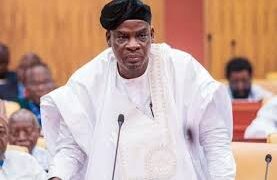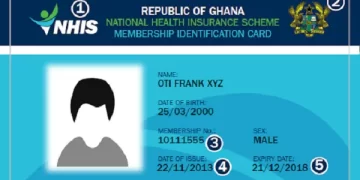According to Fitch’s latest paper, “Energy Sector Debt a Risk to Ghana’s Post-Pandemic Debt Trajectory,” Ghana’s debt will “plateau” at around 75 % (total value of goods and services generated in an economy over a period) in 2024.
As a result of the high Covid-19 pandemic-related spending and the realization of energy sector liabilities, the debt will begin to grow in 2021 and 2022.
Ghana’s sovereign rating (B/Stable) was affirmed by Fitch in October 2020, based on the assumption of a gradual recovery, both in economic performance and fiscal revenue, following the pandemic shock, the availability of foreign and domestic financing sources, and the subsequent stabilization of debt/GDP.
Read Also: Unnatural Carnal Knowledge Is Prohibited Under The Criminal And Other Offenses Act -CHRAJ
“However, Ghana’s public finances are troubled by a history of domestic arrears, as well as contingent liabilities that will continue to add to the country’s public debt stock,” the report said.
It also stated that the country’s energy sector has an outstanding debt stock as well as continuing losses due to an unstable operating environment and a wasteful tariff structure.
Some energy analysts are concerned about the possibility of a power sector crash, which could have a huge impact on the economy.
The government offered electricity subsidies to customers during the covid-19 pandemic, but it is uncertain if the subsidies have been compensated as of now.
The Ministry of Finance reported in December 2020 that it had cleared $1 billion in debt to Independent Power Producers and made agreements with power-generation firms that could save up to $5 billion as part of the Energy Sector Recovery Programme (ESRP).
“We expect the government’s measures would mitigate the worst-case scenario, but that if such efforts fail, the government could face potential liabilities of up to $12 billion.”
Despite the fact that the government implemented the Energy Sector Reform Program to clear remaining liabilities and place the sector on a solid financial footing to prevent potential shortfalls, Fitch said the program’s implementation has been slow.
The current unparalleled energy sector debt is estimated to be between 4% and 5% of GDP, with “efforts to clear existing energy sector arrears adding a little over 1% of GDP to Ghana’s government cash deficit each year through 2023,” according to the study.
However, the amount of energy sector arrears that will appear on the government’s balance sheet after 2023 will be determined by the progress of the government’s energy reform efforts.
Ghana’s debt has risen to GH286 billion as a result of Covid-19 investment.
According to the January 2021 Bank of Ghana’s Summary of Economic and Financial Data, Ghana’s public debt stock increased from GH274.1 billion in September 2020 to GH286.9 billion in November 2020.
This amounted to $50.2 billion and accounted for 74.4 percent of GDP.
According to the data, the country added $12.80 billion to its total public debt stock between October and November.
This was primarily due to covid-19 spending in the form of household and business stimulus packages.
SOURCE: ATLFMONLINE



























